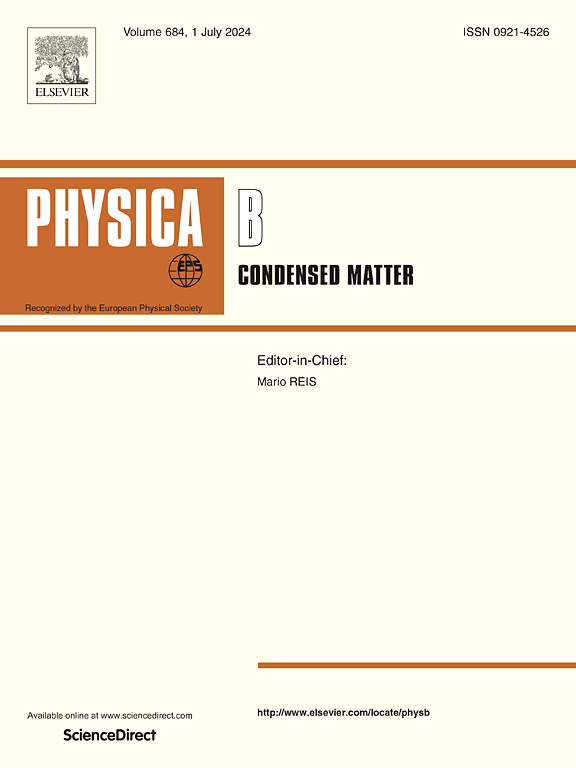A broadband absorber based on W−TiO2 ellipsoidal core-shell array structure
IF 2.8
3区 物理与天体物理
Q2 PHYSICS, CONDENSED MATTER
引用次数: 0
Abstract
In this paper, we demonstrate a new broadband perfect absorber based on an ellipsoidal core-shell array structure. The perfect absorber is formed by a core-shell nano-ellipsoid array of tungsten and titanium dioxide (). Under the TM polarization, the average absorption of the designed structure reached 97.93 % from 400 nm to 1700 nm. Besides, the average absorption rate for solar radiation can reach up to 96.64 % under AM 1.5. Physical mechanisms responsible for the high -efficiency broadband absorption are elucidated of localized surface plasmon polaritons (LSPPs) on the surface of the metallic ellipsoid, and the gap plasmon resonance(GPR) resonance at the gap between adjacent shells. Besides, the effects of geometrical sizes, like the shell thickness, core radius, polarization angle, and incidence angle on the absorption line are further explored. The asymmetric elliptical spherical structure design results in more LSPPs resonance modes being excited (Such as longitudinal mode and transverse mode). The coupling of these modes enhances broadband absorption and provides more error space for the fabrication of spherical nanoparticle array structures. Furthermore, the structure shows a high thermal emissivity of 99.13 % can be achieved when the temperature reaches 1700 K. Given that have melting points above 1700 K, and the proposed structure with as shell provides low synthesis cost benefit and is used for various applications like solar energy conversion, photothermal conversion, and thermal radiators.
求助全文
约1分钟内获得全文
求助全文
来源期刊

Physica B-condensed Matter
物理-物理:凝聚态物理
CiteScore
4.90
自引率
7.10%
发文量
703
审稿时长
44 days
期刊介绍:
Physica B: Condensed Matter comprises all condensed matter and material physics that involve theoretical, computational and experimental work.
Papers should contain further developments and a proper discussion on the physics of experimental or theoretical results in one of the following areas:
-Magnetism
-Materials physics
-Nanostructures and nanomaterials
-Optics and optical materials
-Quantum materials
-Semiconductors
-Strongly correlated systems
-Superconductivity
-Surfaces and interfaces
 求助内容:
求助内容: 应助结果提醒方式:
应助结果提醒方式:


